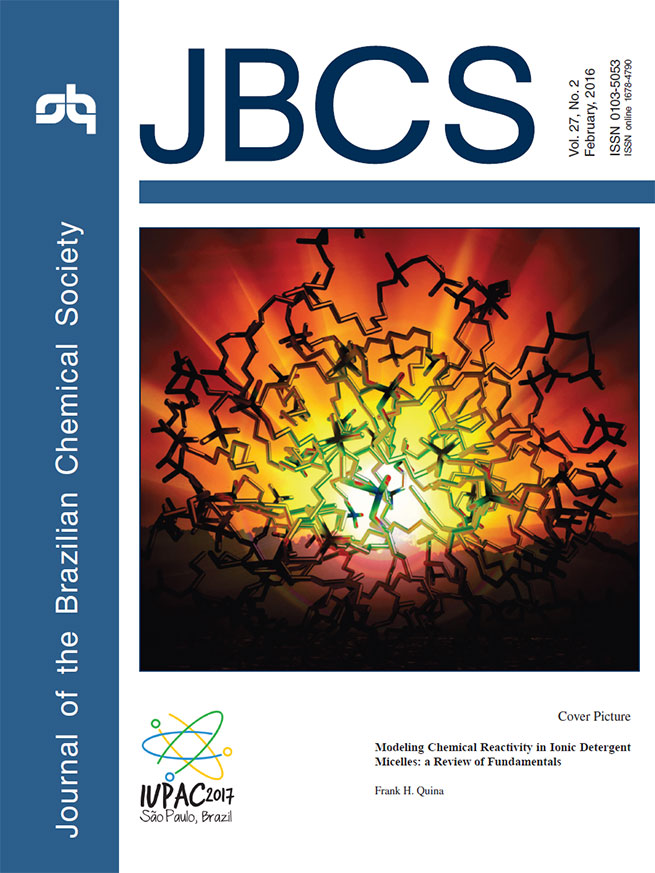vol. 27, No. 2, 2016, p. 227-423
Chemistry at the Interface
This special issue of JBCS is dedicated to the area of Chemistry at the Interface, a rather broad area in which Brazilian scientists have obtained international recognition and where concepts and theoretical frameworks were developed and published in high quality international journals.
About 40 years ago a core of researchers working in Brazil including professors Frank Quina, Hernán Chaimovich, Omar El Seoud and Faruk Nome at both the University of Sao Paulo and the Federal University of Santa Catarina initiated a large area of research of international quality that spanned all types of association colloids such as micelles, microemulsions, and vesicles, but also emulsions, vesicles, biological membranes, and protein-surfactant interactions. At about the same time, remarkably productive international collaborations began with contemporaries who became long time friends including Clifford Bunton, Richard Weiss, Laurence Romsted, Janos Fendler and Eduardo Lissi.
(Read more at Editorial)
Special Issue Chemistry at the Interface
Modeling Chemical Reactivity in Ionic Detergent Micelles: a Review of Fundamentals
Frank H. Quina
How to cite this article
The modulation of reactivity by interfaces is of fundamental importance in chemical and biochemical systems. The pseudophase assumption coupled with ion selectivity at the interface are sufficient to reproduce (as well as predict) many of the effects of simple ionic detergent micelles on chemical reactivity. These concepts illuminatethe underlyingrelationships betweenchemical and photochemical reactivity and the structural and electrostatic properties of charged interfaces. Details are presented in the Review Modeling Chemical Reactivity in Ionic Detergent Micelles: a Review of Fundamentals by Frank H. Quina on page 267.
https://dx.doi.org/10.5935/0103-5053.20150311
Editorial J. Braz. Chem. Soc. 2016, 27(2), 227
Chemistry at the Interface
Faruk Nome; Larry Romsted
How to cite this article
https://dx.doi.org/10.5935/0103-5053.20160019
Account J. Braz. Chem. Soc. 2016, 27(2), 229-238
Electrified Water: Liquid, Vapor and Aerosol
Thiago A. L. Burgo; Fernando Galembeck
How to cite this article
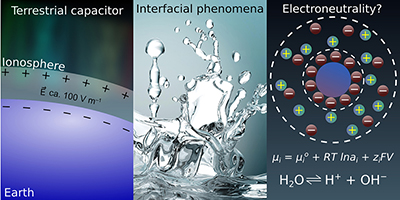
Water with excess charge is the outcome of many different events triggered by electric fields or by interfacial phenomena that produce non-electroneutral water, either liquid, solid or vapor, due to excess H+ or OH- concentration.
https://dx.doi.org/10.5935/0103-5053.20150303
Review J. Braz. Chem. Soc. 2016, 27(2), 239-255
Self-Assembled Networks and Molecular Gels Derived from Long-Chain, Naturally-Occurring Fatty Acids
Mohan Zhang; Richard G. Weiss
How to cite this article

A systematic, critical summary is presented of correlations between the structures of molecular gelators derived from long-chain, naturally-occurring fatty acids and the properties of their gels.
https://dx.doi.org/10.5935/0103-5053.20150247
J. Braz. Chem. Soc. 2016, 27(2), 256-266
Intended and Unintended Consequences and Applications of Unnatural Interfaces: Oligo p-Phenylene Ethynylene Electrolytes, Biological Cells and Biomacromolecules
Harry C. Pappas; Patrick L. Donabedian; Kirk S. Schanze; David G. Whitten
How to cite this article

Oligo phenylene ethynylenes are a class of conjugated polyelectrolyte that have been found to exhibit diverse biosensing and biocidal properties.
https://dx.doi.org/10.5935/0103-5053.20150260
J. Braz. Chem. Soc. 2016, 27(2), 267-277
Modeling Chemical Reactivity in Ionic Detergent Micelles: a Review of Fundamentals
Frank H. Quina
How to cite this article
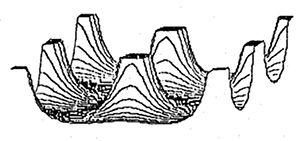
An overview of our current understanding of the interplay between micellar structure and electrostatics, selectivity, solubilization, and reactivity and the analysis of micellar effects on reactivity and equilibria.
https://dx.doi.org/10.5935/0103-5053.20150311
Articles J. Braz. Chem. Soc. 2016, 27(2), 278-284
Thermal Decomposition of Polymer/Montmorillonite Nanocomposites Synthesized in situ on a Clay Surface
Bruno D. Fecchio; Silvano R. Valandro; Miguel G. Neumann; Carla C. S. Cavalheiro
How to cite this article

Polymer-clay nanocomposites are more resistant to thermal degradation than the mere polymer.
https://dx.doi.org/10.5935/0103-5053.20150216
J. Braz. Chem. Soc. 2016, 27(2), 285-294
Multifunctional Imidazole-Derived Polymeric Catalyst for Dephosphorylation Reactions Potentiated by Cationic and Anionic Micelles
Elisa S. Orth; Renan B. Campos
How to cite this article
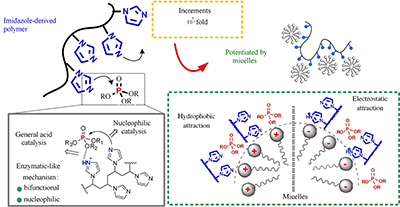
Imidazole-derived polymer efficiently catalyzes dephosphorylation reactions, which is enhanced by cationic and anionic micelles.
https://dx.doi.org/10.5935/0103-5053.20150228
J. Braz. Chem. Soc. 2016, 27(2), 295-302
Improving the Electroluminescence of [Zn(salophen)(OH2)] in Polyfluorene-Based Light-Emitting Diode: The Role of Energy Transfer and Charge Recombination
José C. Germino; Fernando J. Quites; Gregório C. Faria; Romildo J. Ramos; Teresa D. Z. Atvars
How to cite this article
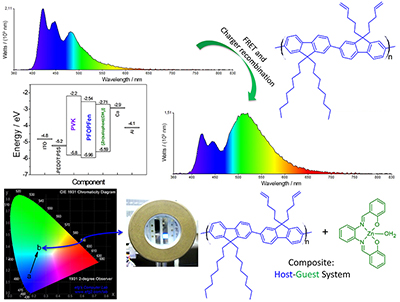
Aquo[N,N'-bis(salicylidene)-o-phenylenediamine]zinc(II) ([Zn(salophen)(OH)2]) exhibits low photoluminescence (PL) and electroluminescence (EL) properties. However, due to the high energy transfer and charge recombination from the poly[(9,9-dioctylfluorenyl-2,7-diyl)-alt-co-(9,9-di-{5'-pentanyl}-fluorenyl-2,7-diyl)] (PFOFPen) blue luminescent polymer, [Zn(salophen)(OH)2] exhibits an intense EL, combining polyfluorene and coordination compounds, and generates a near-white light organic light-emitting diode (OLED).
https://dx.doi.org/10.5935/0103-5053.20150243
J. Braz. Chem. Soc. 2016, 27(2), 303-313
Synthesis and Characterization of Mesoporous Nb2O5 and Its Application for Photocatalytic Degradation of the Herbicide Methylviologen
Douclasse C. Castro; Rodrigo P. Cavalcante; Juliana Jorge; Marco A. U. Martines; Lincoln C. S. Oliveira; Gleison A. Casagrande; Amilcar Machulek Jr.
How to cite this article
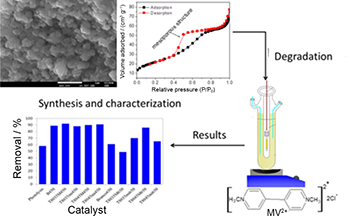
Niobium oxides were synthesized and characterized, and their photocatalytic activity evaluated on the degradation of the herbicide methylviologen.
https://dx.doi.org/10.5935/0103-5053.20150244
J. Braz. Chem. Soc. 2016, 27(2), 314-320
Dynamics of Drop Impact Against Surfaces Covered with Langmuir-Blodgett Layers
Natália Gonçalves; Paulo B. Miranda; Edvaldo Sabadini
How to cite this article

A sequence of the impact of a small droplet against a glass surface covered with Langmuir-Blodgett monolayers of zinc stearate.
https://dx.doi.org/10.5935/0103-5053.20150248
J. Braz. Chem. Soc. 2016, 27(2), 321-333
Production of Additives with Antimicrobial Activity via Tandem Hydroformylationamine Condensation of Soybean FAME Using an Ionic Liquid-Based Biphasic Catalytic System
Hugo F. Ramalho; Karlla M. C. Ferreira; Paula M. A. Machado; Tamyris B. Silva; Ellen T. Rangel; Marcos J. Prauchner; Paulo A. Z. Suarez
How to cite this article
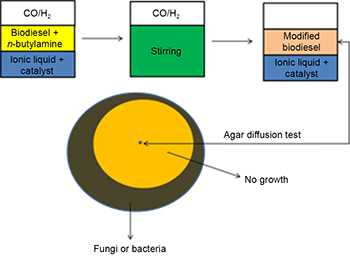
Development of an efficient biphasic system to obtain an antimicrobial modified biodiesel.
https://dx.doi.org/10.5935/0103-5053.20150250
J. Braz. Chem. Soc. 2016, 27(2), 334-340
AuNP@TiO2 Catalyzed Peroxidation of Ethyl- and n-Propylbenzene: Exploring the Interaction Between Radical Species and the Nanoparticle Surface
Charles-Oneil L. Crites; José Carlos Netto-Ferreira; Geniece L. Hallett-Tapley; Juan Cesar Scaiano
How to cite this article

The peroxidation of n-propylbenzene and ethylbenzene proceeds via reactive oxygen species present on the gold nanoparticles (AuNP) surface.
https://dx.doi.org/10.5935/0103-5053.20150254
J. Braz. Chem. Soc. 2016, 27(2), 341-348
Comparing Photo-Fenton Degradation of Malachite Green Using FeII and FeIII Salts Under UVA Light Irradiation
Denis Fuentealba; Carolina Venegas; Marlene Morales; Oscar Waissbluth
How to cite this article
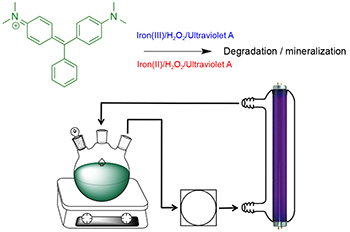
Malachite green degradation using photo-Fenton process with FeIII was compared with FeII under optimized conditions.
https://dx.doi.org/10.5935/0103-5053.20150258
J. Braz. Chem. Soc. 2016, 27(2), 349-362
Self-Organization in Ionic Liquids: From Bulk to Interfaces and Films
Karina Shimizu; Mohammad Tariq; Adilson A. Freitas; Agílio A. H. Pádua; José N. C. Lopes
How to cite this article
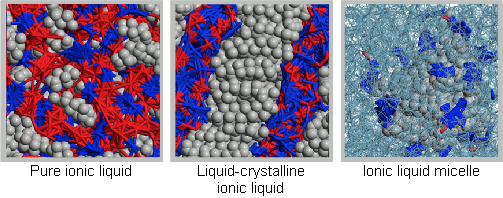
Ionic liquids are considered potential substitutes for traditional solvents. Combined computational and experimental methods are unraveling their unique properties.
https://dx.doi.org/10.5935/0103-5053.20150274
J. Braz. Chem. Soc. 2016, 27(2), 363-371
Cellulose Nanocrystals Assembled on the Fe3O4 Surface as Precursor to Prepare Interfaced C/Fe3O4 Composites for the Oxidation of Aqueous Sulfide
Igor T. Cunha; Ivo F. Teixeira; Joao P. Mesquita; José D. Ardisson; Ildefonso Binatti; Fabiano V. Pereira; Rochel M. Lago
How to cite this article

Schematic representation for the electron transfer through the composites during the sulfide oxidation.
https://dx.doi.org/10.5935/0103-5053.20150283
J. Braz. Chem. Soc. 2016, 27(2), 372-381
Zwitterionic Surfactant Stabilized Palladium Nanoparticles as Catalysts in Aromatic Nitro Compound Reductions
Franciane D. Souza; Haidi Fiedler; Faruk Nome
How to cite this article
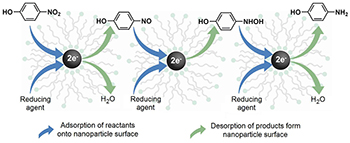
Reduction of aromatic nitro compounds proceeds via nitroso and hydroxylamine derivatives and that the intermediate molecules leave the nanoparticle surface, with the reaction proceeding in several steps where adsorption and desorption are observed in each step of the reaction.
https://dx.doi.org/10.5935/0103-5053.20150284
J. Braz. Chem. Soc. 2016, 27(2), 382-391
Study of the Mode of Inclusion for 7-Hydroxyflavone in β-Cyclodextrin Complexes
Bruno H. Fumes; Mariana R. Guzzo; Antonio E. H. Machado; Laura T. Okano
How to cite this article

Optimized structure of the 7-hydroxyflavone-β-cyclodextrin complex assuming that inclusion occurred via the phenyl group of the flavonoid molecule. This mode of inclusion produced a more stable complex.
https://dx.doi.org/10.5935/0103-5053.20150292
J. Braz. Chem. Soc. 2016, 27(2), 392-401
Structural Parameters of Lamellar Phases Formed by the Self-Assembly of Dialkyldimethylammonium Bromides in Aqueous Solution
Guilherme A. Ferreira; Watson Loh
How to cite this article
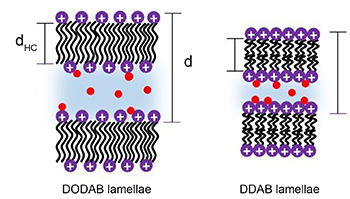
Due to repulsive electrostatic forces, dioctadecydimethylammonium bromide DODAB (di-C18) bilayers are thinner and swell more than those formed by didodecyl bromide DDAB (di-C12) surfactant.
https://dx.doi.org/10.5935/0103-5053.20150297
J. Braz. Chem. Soc. 2016, 27(2), 402-410
Synthesis, Physicochemical and Photophysical Characterization of 4-(1-Pyrenyl)-butyl-α-D-mannopyranoside
Catalina Sandoval; Franco S. Arriagada; Julio R. De la Fuente; Susana A. Sanchez; Javier Morales; Nancy Pizarro; Santi Nonell; German Gunther
How to cite this article
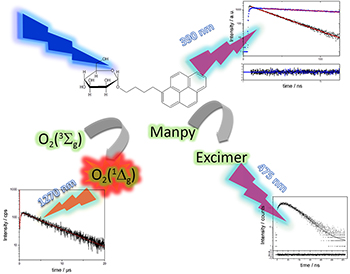
The synthesized mannose derivative linked through a short methylene chain to a pyrene moiety retains the photophysical behavior of non-substituted pyrene.
https://dx.doi.org/10.5935/0103-5053.20150306
J. Braz. Chem. Soc. 2016, 27(2), 411-422
Oxidative Modifications in Crystallin Proteins and Lens Epithelial Cells Associated with Photosensitized Reactions Mediated by the Major Chromophore Arising from Glucose Degradation
Francisco Vargas; María Inés Becker; Bertrand Friguet; Eduardo Silva; Felipe Avila
How to cite this article
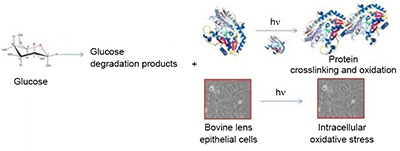
Chromophores arising from glucose degradation induce oxidative modifications in lens proteins and lens epithelial cells through photosensitized reactions.
https://dx.doi.org/10.5935/0103-5053.20150315
J. Braz. Chem. Soc. 2016, 27(2), 423
Ultrafast Dynamics of Au Nanopyramid Interfaces Prepared by Nanosphere Lithography: Effect of Substrate Chemical Composition
Guilherme F. Ferbonink; Edna R. Spada; Diego P. dos Santos; Maria L. Sartorelli; Rene A. Nome
How to cite this article

Wavelength-dependent pump-probe measurements across the surface plasmon resonance spectrum of Au nanopyramids.
https://dx.doi.org/10.5935/0103-5053.20150344
Online version ISSN 1678-4790 Printed version ISSN 0103-5053
Journal of the Brazilian Chemical Society
JBCS Editorial and Publishing Office
University of Campinas - UNICAMP
13083-970 Campinas-SP, Brazil
Free access










